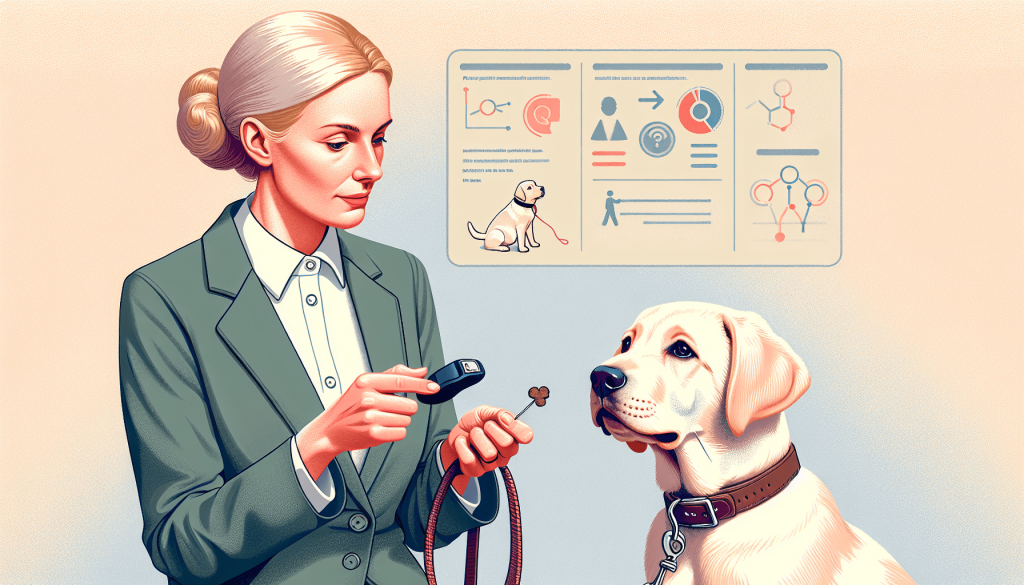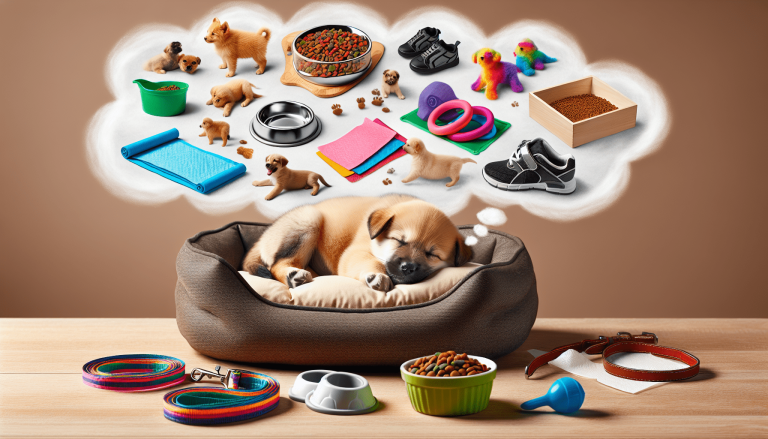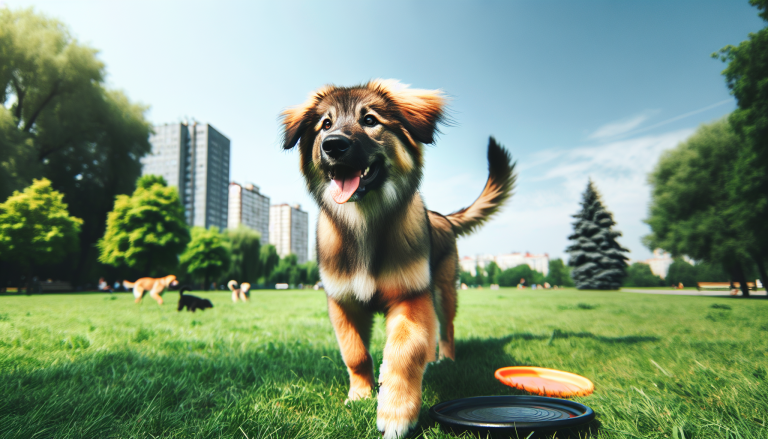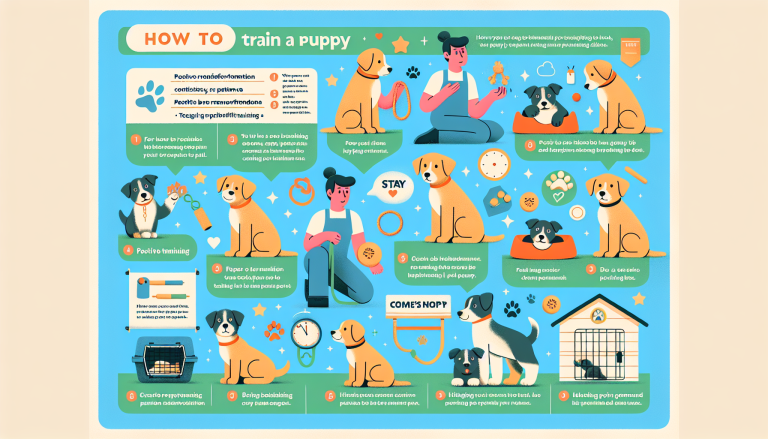You love your furry friend and want to provide them with the best training possible. But where to begin? In this article, we will explore the fundamentals of dog training techniques, giving you the knowledge and tools you need to establish a strong foundation for your pup’s learning. From positive reinforcement to crate training, you will gain a comprehensive understanding of the basics, setting you and your canine companion up for success. So grab your pup’s favorite treat and let’s embark on this exciting journey together!
Table of Contents
TogglePositive Reinforcement Training
Definition and Principles
Positive reinforcement training is a dog training method that focuses on rewarding desired behaviors rather than punishing undesirable ones. The main principle of positive reinforcement training is to create a positive association between a behavior and a reward, encouraging the dog to repeat that behavior in the future. This technique relies on the use of rewards, such as treats, praise, or play, to motivate and reinforce good behavior.
Types of Rewards
There are various types of rewards that can be used in positive reinforcement training. Food treats are commonly used as a primary reward due to their high value for most dogs. Praise, pets, and belly rubs can also be effective rewards, as they provide social interaction and affection. Additionally, toys and playtime can serve as rewards for dogs who are highly motivated by play. By using a combination of these rewards, trainers can find what works best for their individual dog.
Clicker Training
Clicker training is a specific technique within positive reinforcement training that utilizes a small handheld device called a clicker. The clicker makes a distinct clicking sound when pressed and is used to mark the desired behavior precisely at the moment it occurs. This immediate feedback helps the dog associate the behavior with the reward. Clicker training can be highly effective in teaching dogs new behaviors and shaping their existing ones.
Punishment-based Training
Definition and Principles
Punishment-based training, also known as aversive training, involves the use of punishments to discourage unwanted behaviors in dogs. This method relies on the application of unpleasant consequences, such as physical corrections or verbal reprimands, to deter the dog from repeating the undesirable behavior. The underlying principle of punishment-based training is that the dog will learn to associate the unwanted behavior with discomfort or unpleasant consequences, leading to its reduction or elimination.
Types of Punishments
There are various types of punishments used in punishment-based training, including physical corrections, such as leash jerks or collar pulls, and verbal reprimands, such as a sharp “no” or “bad dog.” Some trainers may also implement methods such as shock collars or spray bottles to discourage certain behaviors. However, it is crucial to note that the use of aversive techniques can have negative side effects and may cause fear or anxiety in dogs.
Potential Drawbacks
While punishment-based training can produce immediate results in stopping certain behaviors, it has several potential drawbacks. Dogs trained using punishment may become fearful or aggressive due to the association of the punishment with the trainer or the training environment. Additionally, punishment-based methods do not teach the dog what to do instead of the unwanted behavior, which can lead to confusion and frustration. Positive reinforcement training techniques offer a more humane and effective way to train dogs while preserving their trust and overall well-being.
Marker Training
What are Markers
Markers are tools used in dog training that provide an instantaneous and distinct signal to mark the desired behavior. Commonly used markers include a clicker, a verbal cue (such as “yes” or “good”), or even a hand signal. Markers serve as a way to communicate to the dog that they have performed the desired behavior correctly, allowing for precise timing and consistent feedback during training sessions.
How Markers are Used in Training
When using markers in training, the trainer marks the exact moment the desired behavior occurs, immediately followed by a reward. For example, if the goal is to teach a dog to sit, the trainer would use a marker, such as a clicker, to indicate the correct position, followed by a reward, such as a treat. Over time, the dog associates the marker sound or signal with the desired behavior, making it easier to shape and reinforce new behaviors.
Benefits of Marker Training
Marker training offers several benefits for both dogs and trainers. Firstly, markers provide clear and instantaneous feedback, helping the dog understand which behaviors are being rewarded. This leads to faster learning and better communication between trainer and dog. Additionally, marker training allows for precise timing, making it easier to capture and reinforce desired behaviors. This method can be used across various training scenarios, making it a versatile and effective tool for dog training.
Obedience Training
Teaching Basic Commands
Obedience training is a crucial part of dog training that involves teaching the dog essential commands and behaviors. These commands include sit, stay, down, come, and heel, among others. When teaching basic commands, consistency and positive reinforcement are key. Breaking down each command into small steps and rewarding the dog for each correct response helps them understand what is expected of them. With patience and practice, dogs can quickly learn and respond to these essential commands.
Building a Strong Bond with Your Dog
Obedience training not only teaches dogs important commands but also strengthens the bond between the dog and their owner or trainer. The training sessions provide an opportunity for positive interaction and communication, allowing both parties to better understand each other. Spending time together during training builds trust and deepens the connection between the dog and their owner, leading to a more harmonious and fulfilling relationship.
Dealing with Behavior Issues
Obedience training can also address and alleviate various behavior issues in dogs. By providing clear guidelines and expectations through training, dogs gain a sense of structure and learn acceptable behaviors. Through consistent training and positive reinforcement, problematic behaviors, such as excessive barking, jumping on people, or destructive chewing, can be modified or eliminated. Obedience training offers a proactive approach to managing behavior issues and promoting a well-behaved and happy dog.
House Training
Establishing a Routine
House training, also known as potty training, involves teaching a dog to eliminate in an appropriate location, such as outside or on designated pee pads. Establishing a consistent routine is crucial for successful house training. Dogs thrive on routine, so establishing set feeding times, regular potty breaks, and consistent sleeping arrangements can help them develop reliable bathroom habits. Consistency and patience are key when house training a dog.
Using Positive Reinforcement
Positive reinforcement plays a vital role in house training. Whenever the dog eliminates in the appropriate area, such as outside, it is essential to reward them immediately with praise, treats, or affection. This positive reinforcement helps the dog associate the desired behavior with a pleasant outcome, reinforcing the habit of eliminating in the appropriate location. Avoid punishment or scolding for accidents, as this can create anxiety and hinder the house training process.
Dealing with Accidents
Accidents are a natural part of the house training process. It is crucial to remain patient and avoid scolding or punishing the dog for accidents, as this can lead to fear and anxiety associated with eliminating. Instead, clean up accidents thoroughly using pet-friendly cleaning products to remove any lingering odor that may attract the dog to repeat the behavior in the same spot. Revisit the house training routine, ensuring the dog has enough opportunities to eliminate in the appropriate area.
Leash Training
Choosing the Right Leash
Choosing the right leash is essential for successful leash training. A standard leash with a length of 4 to 6 feet is recommended for most dogs. It is important to select a leash that is sturdy and comfortable to hold. Retractable leashes are not ideal for leash training, as they can encourage pulling and make it difficult to maintain control.
Teaching Loose Leash Walking
Teaching a dog to walk politely on a leash requires patience and consistency. Start by introducing the concept of loose leash walking in a low-distraction environment, such as a quiet street or a fenced backyard. Use positive reinforcement, rewarding the dog for walking beside you without pulling. Gradually increase the level of distractions as the dog becomes more comfortable and reliable in walking on a loose leash.
Dealing with Pulling and Distractions
If the dog pulls on the leash during walks, it is important to address the issue promptly. Stop walking and wait for the dog to release tension on the leash before moving forward. Reward the dog for walking without pulling, and redirect their attention to you using treats or toys. Consistency and regular training sessions will help the dog understand that pulling is not rewarded and that walking calmly on a loose leash is the desired behavior.
Socialization
Importance of Socialization
Socialization is a critical aspect of a dog’s overall development. It involves exposing the dog to various experiences, environments, people, and animals to help them become well-adjusted and confident. Proper socialization during puppyhood can prevent behavior problems later in life, such as fear or aggression. Socialized dogs are more likely to be comfortable and relaxed in new situations, leading to better overall behavior and a higher quality of life.
Introducing Your Dog to New Experiences and Environments
To socialize your dog, gradually introduce them to different experiences and environments. Start with small, controlled interactions and gradually increase the level of difficulty. Expose the dog to different sights, sounds, and smells, such as busy streets, parks, and crowded areas. Encourage positive associations by rewarding calm behavior and offering treats or praise during these experiences.
Interacting with Other Dogs and People
Socializing your dog with other dogs and people is crucial for their development. Arrange playdates with well-behaved dogs and allow supervised interactions. Encourage positive interactions and reward appropriate behavior. Similarly, expose your dog to various people, including children, seniors, and individuals wearing different clothing or accessories. Teach your dog to greet people politely and reward them for calm and friendly behavior.
Behavior Modification
Identifying Problem Behaviors
Behavior modification involves addressing and modifying problem behaviors in dogs. The first step in behavior modification is identifying the specific behaviors that need to be addressed. Common problem behaviors include aggression, excessive barking, separation anxiety, or destructive chewing. Understanding the underlying causes of these behaviors can help in developing effective behavior modification techniques.
Implementing Behavior Modification Techniques
Once the problem behaviors have been identified, various behavior modification techniques can be implemented. These techniques may include desensitization and counterconditioning, where the dog is gradually exposed to the triggers of the undesired behavior while associating them with positive outcomes. Additionally, positive reinforcement training and redirecting the dog’s focus to more desirable behaviors can also be effective tools in behavior modification.
Seeking Professional Help if Needed
In some cases, behavior modification may require the expertise of a professional dog trainer or behaviorist. Trained professionals can provide guidance, support, and specialized techniques to address complex behavior issues. Their knowledge and experience can be invaluable in helping dogs overcome problem behaviors and lead happier, more balanced lives. If the problem behaviors persist or escalate, seeking professional help is highly recommended.
Clicker Training
Understanding the Clicker
A clicker is a small handheld device that emits a distinct clicking sound when pressed. This sound serves as a marker to signal to the dog that they have performed the desired behavior correctly. The clicker provides a consistent, instantaneous, and non-emotional signal, making it an effective way to communicate with the dog during training sessions. Clickers are widely available and easy to use, making them a popular choice for clicker training.
How to Use the Clicker in Training
To use the clicker in training, start by charging the clicker by repeatedly clicking and immediately following it with a reward, such as a treat. This helps the dog understand that the clicker sound predicts a reward. Once the dog understands the association, the clicker can be used to mark and reinforce desired behaviors. Click the moment the behavior occurs, followed by a reward. Consistency and timing are crucial for effective clicker training.
Benefits and Limitations of Clicker Training
Clicker training offers several benefits, including clear communication, precise timing, and the ability to capture and shape behaviors. The distinct clicking sound helps the dog understand which behaviors are being rewarded, leading to faster learning. However, clicker training may not be suitable for all dogs, as some may find the sound intimidating or may not respond well to the technique. Understanding your dog’s temperament and preferences is important when determining if clicker training is the right approach.
Training Tools and Equipment
Types of Training Collars and Harnesses
Training collars and harnesses are tools used to aid in teaching dogs proper behavior during training sessions. Common types of training collars include flat collars, martingale collars, and head collars (such as a gentle leader). Harnesses provide more control and are suitable for dogs prone to pulling. It is important to choose the appropriate type of collar or harness based on the individual dog’s size, breed, and behavior.
Training Treats and Rewards
Training treats and rewards are essential for positive reinforcement training. Use small, soft, and highly palatable treats that can be quickly consumed by the dog without causing distraction. Treats should be sufficient to motivate the dog, but not too large or calorie-dense to avoid overfeeding. Additionally, verbal praise, gentle petting, and playtime can serve as additional rewards during training sessions.
Toys for Training and Mental Stimulation
Toys can be used as tools for training and mental stimulation. Toys that dispense treats, such as puzzle toys, are great for engaging the dog’s mind and encouraging problem-solving skills. Interactive toys, such as tug toys or balls, can also be used as rewards during training sessions. Offering a variety of toys keeps the dog stimulated and motivated during training, making the learning process more enjoyable for both dog and trainer.
In conclusion, understanding the basics of dog training techniques is crucial for building a strong and positive relationship with your furry companion. Positive reinforcement training, such as clicker training, provides an effective and humane way to teach and reinforce desired behaviors. Obedience training helps establish clear communication and a strong bond between you and your dog while addressing behavior issues. House training, leash training, and socialization are important aspects of a dog’s overall development and well-being. Behavior modification techniques can help modify problem behaviors, and the right training tools and equipment, such as collars, treats, and toys, can aid in the training process. By using these techniques and approaches, you can create a harmonious and fulfilling relationship with your beloved dog.








